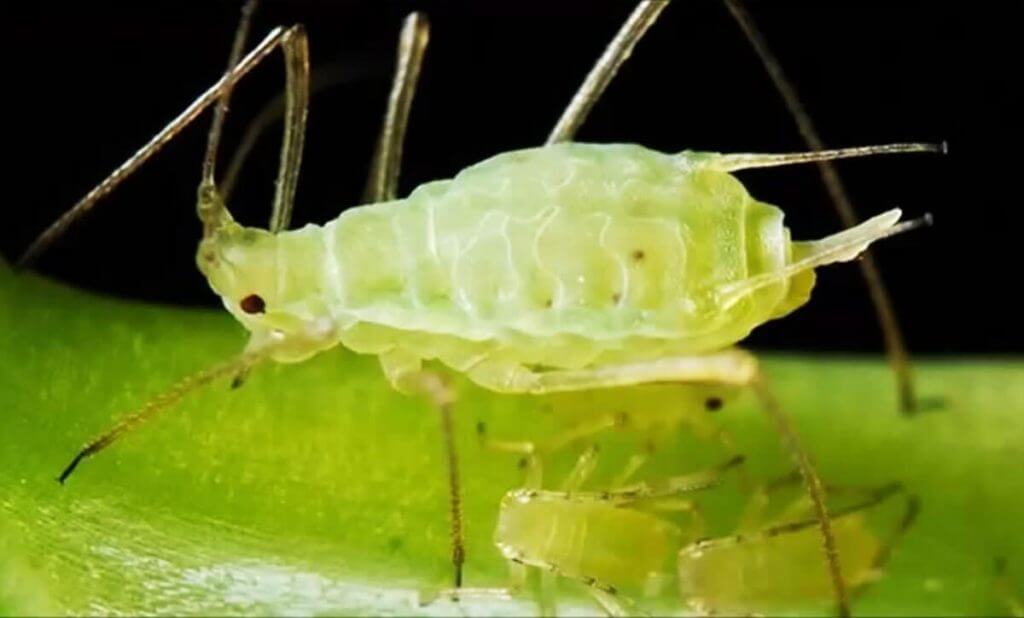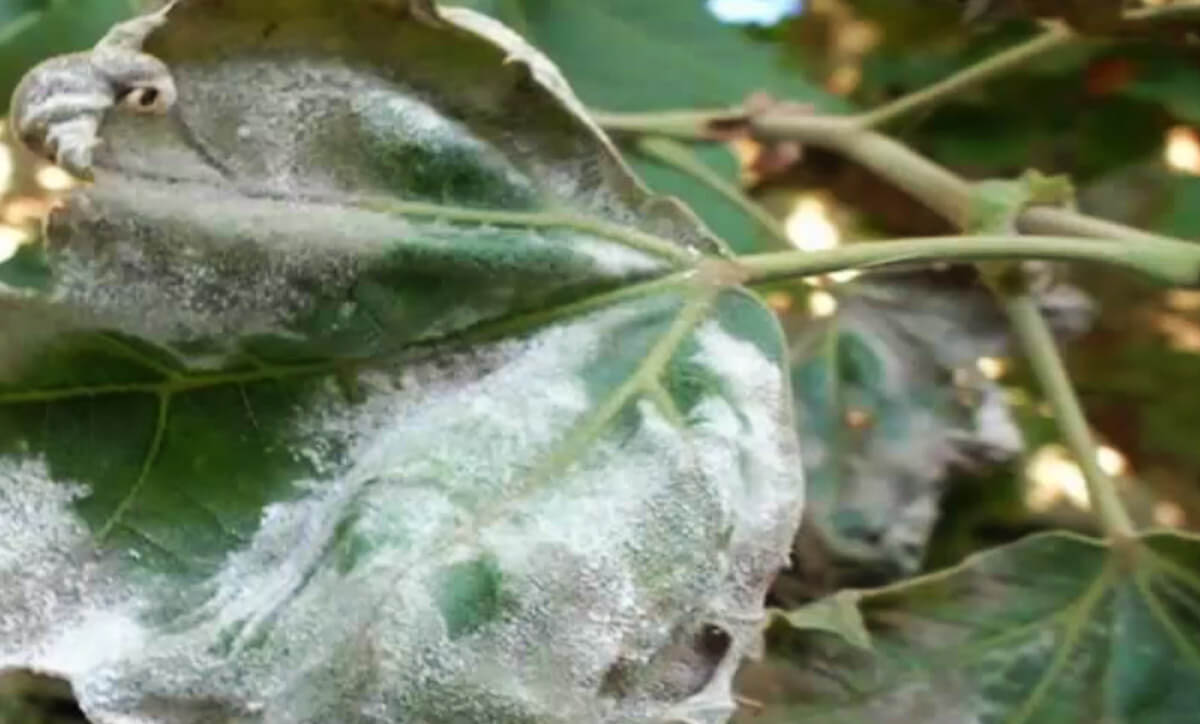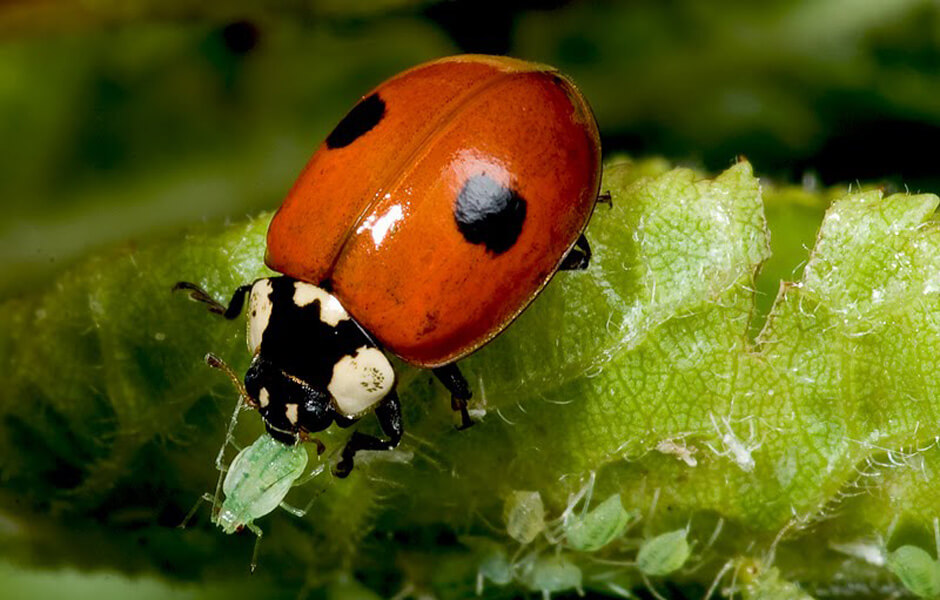The aphid is one of the most common pests of cannabis crops. It has a great destructive potential because they are “social” insects and live in colonies of tens and hundreds of individuals, so they literally invade our crop.
If our plants have been invaded by the aphid, there are some remedies that we can use to eradicate them. The Aphid is not one of the most difficult pests to eliminate, although if we do not control it, it can cause irreversible damage to our crop.
What is Aphid?
The aphid is an insect belonging to the family Aphidoidea of the order of hemiptera. These are small insects of between 1 and 10mm of different colors, predominantly green, yellow, black and brown.
Its appearance is rounded, and its body is divided into three parts: head, thorax and abdomen. There are aphids without wings or winged and winged aphids and they are provided with an oral suction device through which they feed sucking the sap of the plant.
It reproduces quickly so if we are not attentive we will probably notice its presence when the plant is already invaded.

The aphid, in addition to be a very social insect and living in colonies with the same species, is associated perfectly with ants and bees establishing a relationship in which both species take advantage of each other which encourages the destruction of the crop quickly.
They occur more frequently in dry and warm environments, especially in spring and summer. On the plant they are mainly housed on the underside of the leaves and stem and love young buds. The presence of ants in our crop is not a good sign, we must be attentive to this type of insects as well.
Aphid damage on weed
The damage caused by aphids can be, as in most pests derived directly from their attacks or caused indirectly by the presence of this pest.

Direct damage:
Unlike other pests such as whitefly, the Aphid leaves no sting marks but can be easily located with a plant inspection. Sap suction causes a general weakening of the plant, the appearance of yellow spots on the leaves and the deformation of stems and buds that affects the final production of the plant.
Indirect damage:
The indirect damage that the Aphid can cause in our crop derive mainly from molasses that secrete that, on the one hand, serves as food for ants and ensures their presence in our crop, and, on the other hand, promotes the appearance of fungi such as black-or-bold that significantly reduce the plant’s photosynthesis capacity.
In addition, if all this were not enough, the Aphid can act as a vector transmitting viruses to the plant (can transmit up to 117 different viruses) especially the winged Aphid.
As with any other plague, the most important thing is to prevent its appearance to avoid the damage that this insect can cause, even if we end up killing it. Prevention is more effective and ultimately cheaper and less labor-intensive than pest eradication.
How to prevent Aphid?
We can use different techniques that will help us to prevent the appearance of this plague:
- Frequent examination of our plants: this is the best way to detect any anomaly and find a solution in time. Rapid detection is essential in pest control.
- Neem oil: it is a natural and 100% ecological preventive that besides protecting against the aphid, it will protect against many other pests such as the red spider mite.
- Cultivate aromatic plants that repel them like mint, coriander, basil, garlic, lemon balm, rosemary or lavender among others.
- Another option is to grow plants that attract Aphid predators such as dill, marvel or borage.
- Infusions of garlic, wormwood, onion or ponytail to use as repellents.
- Slurry of nettles: it has insecticidal effect and is 100% ecological. It serves as a preventative to repel aphid and we can also use it to treat the plague once infested. In addition to insecticide, it promotes growth and strengthens the plant’s immune system.
- Tanaceto infusion: its high content of pyrethrins makes it a natural and ecological insecticide indicated to avoid the attack of aphid and other pests.
- Remove weeds from around our gardens and cultivation sites that may encourage the emergence of this pest.

How to fight and control the Aphid?
If we have not arrived on time or prevention has not been sufficient and we already have the pest installed in our crop, there are some methods that we can use to eliminate the Aphid from our plants. As always, we recommend ecological methods that are respectful of the environment and our own health.
- Cultural control: placing yellow sticky chromatic traps will help us catch winged aphids and make detection easier.
- Biological control: Like other pests, introducing natural predators of the Aphid into the crop helps eradicate the pest. The main predators of this insect are parasitoids of the genus Aphidius, Chrysoperla carnae or Coccinella septempuntata, we can also use the fungus Verticillium lecanii.
- To eliminate it manually: it is a primary technique but if we arm ourselves with patience we can eliminate a large part of the adult population by hand since they are easily visible. This technique should be combined with another method to help eradicate the pest once and for all.
- Neem oil and potassium soap: in addition to using them as a preventative, it can be used to treat plague and eliminate aphids. We can apply it by spraying the diluted mixture in water or apply it with the help of a sponge.
- Infusions of garlic, onion, wormwood or tanaceto serve both to prevent and treat plague.
- Slurry of nettles: to use it as aphid treatment we only need to modify the mixture.
- Nicotine: we can make a homemade insecticide by diluting tobacco in water and spraying on plants since nicotine is one of the components that many insecticides use.
As a last option, if the special circumstances of the pest advise it and we are NOT in the flowering stage, we can use chemical insecticides to kill the aphid.
Some advices to kill aphid
It is always more advisable to use ecological methods which respect the environment. On the other hand, as with any pest, prevention and early detection is essential.
We must use ecological precautions and frequently inspect our plants to check for any anomalies that may arise.
Keeping our growing area clean and disinfected will also help prevent any pest attacks.



